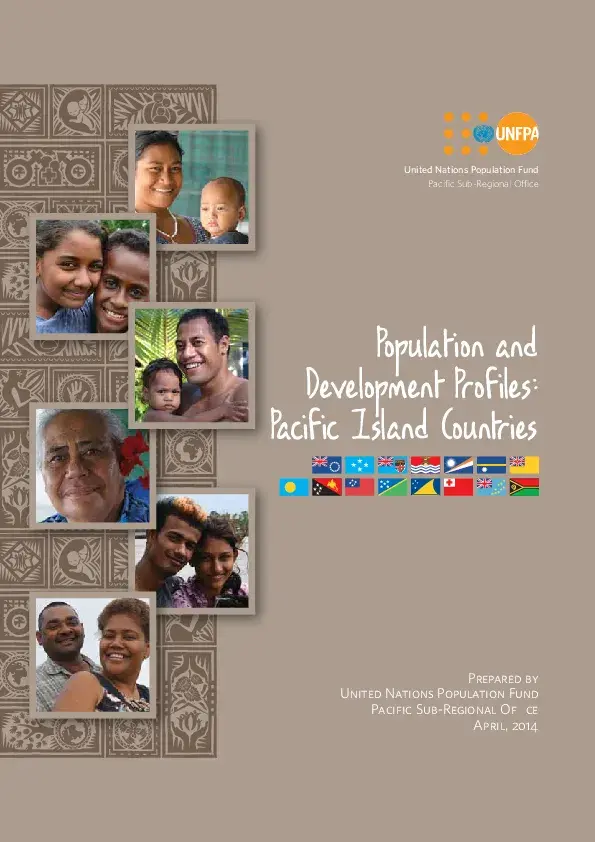This report provides a summary of updated population and development profiles of 15 Pacific countries. Four of these countries (Solomon Islands, Kiribati, Tuvalu and Vanuatu) are classified as Least Developed Countries (LDCs). All of these countries are politically independent, as are Fiji, Nauru and Tonga. Three countries (Palau, Marshall Islands and the Federated States of Micronesia) are associated to the United States through a Compact of Free Association. Two countries (Cook Islands and Niue) are self governing in free association with New Zealand, and the Tokelau Island is a dependent territory of New Zealand. The political status of each of the 15 countries has important consequences for both demographic dynamics and the level of development and how they are linked. With respect to Violence Against Women (VAW) national prevalence, the data was generated using WHO household survey methodology, with UNFPA technical support, in a majority of the Pacific countries. The primary data source for the core population indicators is the respective national census reports, although other national sources such as Demographic Health Surveys have also been used where appropriate.


